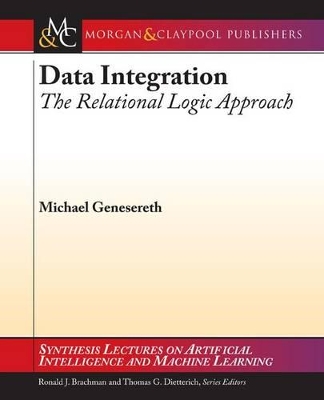Data integration is a critical problem in our increasingly interconnected but inevitably heterogeneous world. There are numerous data sources available in organizational databases and on public information systems like the World Wide Web. Not surprisingly, the sources often use different vocabularies and different data structures, being created, as they are, by different people, at different times, for different purposes.
The goal of data integration is to provide programmatic and human users with integrated access to multiple, heterogeneous data sources, giving each user the illusion of a single, homogeneous database designed for his or her specific need. The good news is that, in many cases, the data integration process can be automated.
This book is an introduction to the problem of data integration and a rigorous account of one of the leading approaches to solving this problem, viz., the relational logic approach. Relational logic provides a theoretical framework for discussing data integration. Moreover, in many important cases, it provides algorithms for solving the problem in a computationally practical way. In many respects, relational logic does for data integration what relational algebra did for database theory several decades ago. A companion web site provides interactive demonstrations of the algorithms.
- ISBN10 1598297422
- ISBN13 9781598297423
- Publish Date 7 July 2010 (first published 30 March 2010)
- Publish Status Temporarily Withdrawn
- Imprint Morgan & Claypool
- Format eBook
- Pages 97
- Language English
